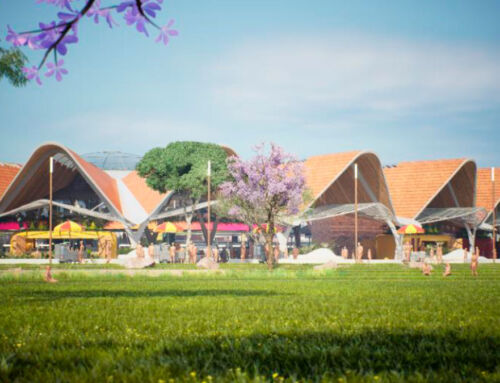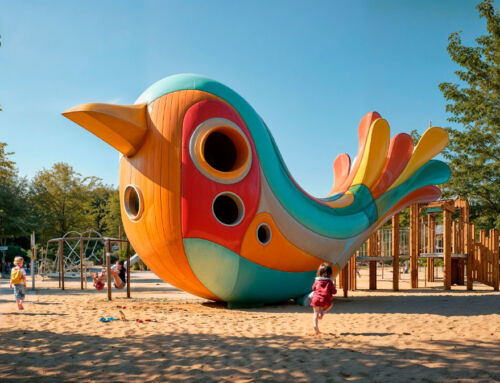Through the English translation (by Fraze Craze) of an article that appeared in GA Houses 182 (A.D.A. EDITA Tokyo Co., Ltd.), which the specialised magazine ArchDaily has recently published, we have news of an unusual project worthy of study. It is a restaurant and dwelling that the architectural firm Junya Ishigami + Associates carried out this year 2022 in the city of Ube, Japan. It is an unusual project both in its conception and design, and in its construction.
According to the architect’s testimony, a Japanese chef doing French cuisine asked him to design a building as “heavy” as possible for the new restaurant and living quarters; he said he wanted “an architecture whose heaviness would increase with time (…), something with the roughness of nature”. The architect responded to this request by proposing the construction of an underground building. However, contrary to what usually happens, the final result was not as faithful to the design as might have been expected, which shows the complexity of the project.
To ensure maximum construction accuracy, the coordinates of the 3D model of the project were entered into a “total station” theodolite (an instrument that measures angles and distances simultaneously), which was used to determine the positions of the columns and pillars in the ground. The workers then “manually” excavated and emptied the holes that were to become the columns and pillars. They had to constantly consult the 3D model to confirm the positions and coordinates of the excavation. Once the ground had been emptied, concrete was poured into the holes. Subsequently, after solidification, the remaining soil spaces between the solid concrete were excavated.
The architect says that after the previous step, they had planned to “wash” the concrete with earth and expose the grey structure. However, they were so impressed by the appearance of the concrete impregnated with red mud that they decided to leave it as it was. He concludes, “It was then that we sensed the atmosphere of a cave and decided to redesign the building with a new image”. But in addition, when comparing the interior space with the 3D model, they found some differences between the design and the actual coordinates that the excavation had produced during construction.
This is how they discovered “new spaces that we had not anticipated to emerge from the overlapping discrepancies“, and therefore “the architectural design process was flipped“. Now, in order to determine the layout and size of furniture, glass enclosures, hydraulic installations, etc., they had to refer to the actual structure resulting from the construction process and update the architecture accordingly.
Sources: ArchDaily, Junya Ishigami + Associates. Imágenes: ©Junya Ishigami + Associates, courtesy of Maison Owl and ©Yashiro Photo Office.


















